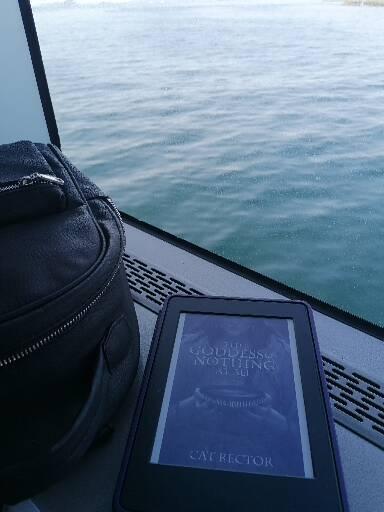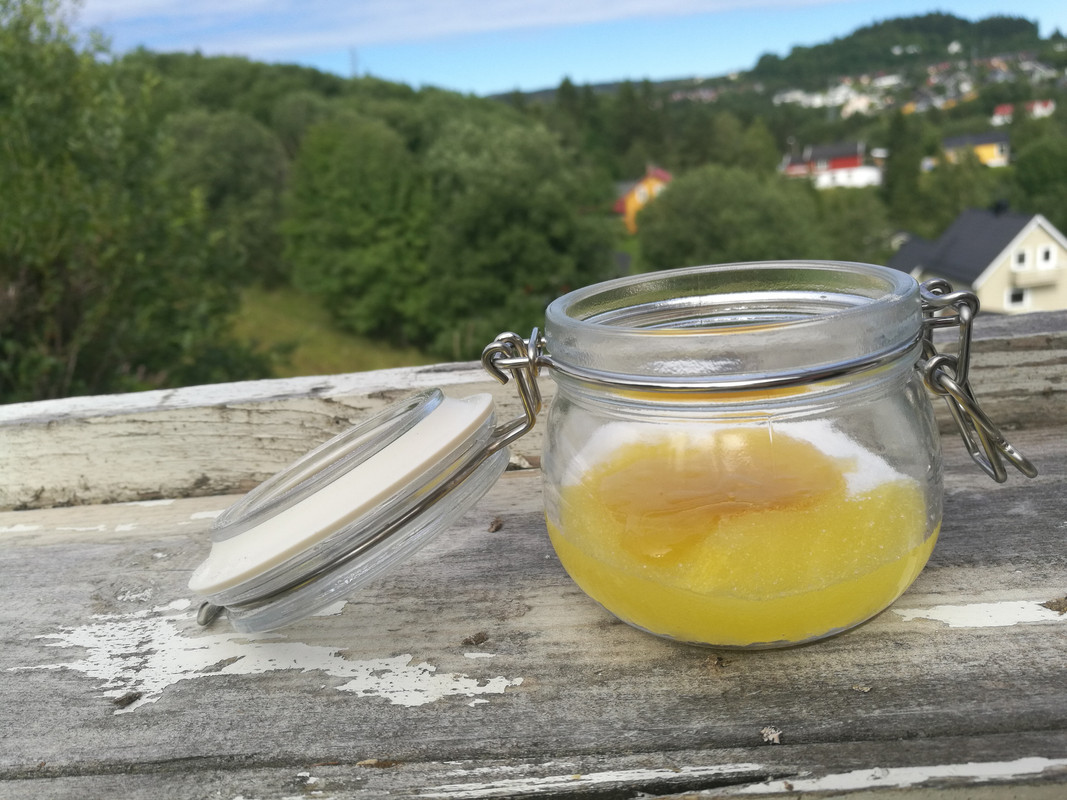This review contains spoilers. They will be marked.
Wild is the Witch (2022) by Rachel Griffin is a contemporary young adult fantasy about loss and belonging. It is a hetero enemies-to-lovers between Iris Gray, a witch, and Pike Alder, a witch-hater. The book is barely 300-pages, easily read and followed. While the characters are in the older YA audience age-wise, the book reads to me more suitable for a young YA or even middlegrade reader. The main character feel much younger than her years.
The book follows 18-year-old Iris Gray who has shut the world out after an incident two years ago that turned her community fearful of witches. Now, she has settled down with her mother at Foggy Mountain Wildlife Refuge in Washington. Being a Lunar, Iris has a strong connection to animals. Despite this, she's wary of anyone learning her true identity as a witch. Her father is behind in their previous town, her best friend got stripped of her power, and the only person her age at the refuge is the witch-hating, aspiring ornithologist intern, Pike Alder.
When Iris concocts a curse for Pike she never meant to unleash, she is set on hiking the Pacific Northwest to find the owl who stole the curse and dispel it for her own good. Forced into proximity with Pike on the trail, their hatred for each other slowly turn into understanding, and some of the walls Iris have built around herself start to unravel. Still, time is of the essence: if the owl dies before she gets the chance to unbind the curse, Pike and the entire region are in danger and Iris may lose the only thing that makes her feel like she still belongs somewhere: her magic.
Read The StoryGraph synopsis here.
Magic system
There are three types of witches: Lunars, Stellars, and Solars. Lunars have magic that more strongly impacts animals while Stellars impact humans. Solars, though not specified, have qualities that can improve agriculture. Based on the name, I would assume their magic impact the weather or plants.
Their magic is in everything around us - electrons, atoms -, but not everyone is able to tap into the source. Witches are able to decide how much magic they want to channel, and their ability to regulate how much magic they pull towards themselves from the environment is what stops them from burning alive. Their magic has limitations as it works with the natural world, and not against it. They can request an animal to do something, like trusting them or feeling calm, but they can't compell it to do it. As Iris explains in chapter two, "there's a balance between the need for science and the need for magic."
All witches and mages are connected under the Witches' Council. There are two primary things we learn about witch culture. One, endangered animals can be strong amplifiers of power. Two, turning a human into a witch is close to a death sentence. It can be done, but if the human die, the witch or mage will be stripped of their powers, and likely jailed by a human court.
A note on the witches' society: the witches and mages felt more like a race than a wide arrange of people with powers in the way they are being treated.
The Owl
Owls are a common symbol of wisdom and knowledge. In the book, a Northern spotted owl is what forces Iris onto her journey. Throughout the story, she comments on if the actions of the owl are deliberate. The northern spotted owl is a powerful amplifier, and an endangered species both in the book and in real life. The movement of the owl reflects Iris's progress as she maneuvers through her relationship with Pike on the trail. If the owl has an agenda, it is to bring them closer together and help them, and especially Iris, to open up about who she is.
Imagery
Similar to Griffin's first book, The Nature of Witches, Wild is the Witch also keeps a commentary on an important environmental challenge of our time. This time, it's the loss of old-growth forests to deforestation and the endangerment of species. Wild focuses particularly on the Northern Spotted Owl which lives in The Pacific Northwest, North America.
While the imagery is beautiful and you feel pulled into a misty old-growth forest from the start, it also feels somewhat repetitive how often it is mentioned. While it can be argued that it serves to remind the reader of the beauty and importance of such forests, it is also slightly disturbing. I love forests, but I also want the book to move on and focus on its main promise: the relationship between Iris and Pike. Btw, they were somewhat annoying characters even though it made some sort of sense (more in that below the spoiler mark).
Cover & design notes
I got the first edition of this book because the hardback is carrying a stunning blue, pink, and purple print of feathers and ferns. The dust cover is not my favorite, but it's not bad either. Inside, the book carries a darker design than what I was expecting from it. The chapter headers are in black with two white feathers hovering in the air. After having gone into some depth with this book, I understand it more than if I just read it swiftly. It's definitively a book carrying a heavier burden than what might be obvious at first sight. If you wonder how it looks, you can take a look at Rachel Griffin's Instagram post.
Conclusion
I liked this book, but I can't say I loved it. I desperately want to thought because I adored The Nature of Witches. Wild is the Witch read as a more straightforward book for me where the only thing I didn't expect was the plot twist. It was a book I swallowed in two days, but I didn't fall in love with any of the characters or felt too attached to them. Not in the way I wish to commit to characters. I love that Griffin uses the book to feature causes that are important to her, wildlife refuges, loss of old-growth forests, and the Northern Spotted Owl. Yet, a day or two on the trail didn't feel too realistic as enemies-to-lovers for me. I wish the relationship took longer to develop.
Major spoilers beyond this point.
My rating for those who do not want to read on: 3\5.
On the theme of loss
Loss is not only a theme when it comes to the different impacts of deforestation. The theme of loss is woven through Iris's story from start to finish. It opens with her losing her best friend, her hometown, then her father, and a lack of safety in the world around her. She's terrified of anyone finding out she's a witch and working with Pike Alder is a constant action of hiding who she is. She also misses her father, who she's fallen out of touch with when he refused to move to another town. The growing distrust of witches after her best friends, Amy's trial and jailing, also made her shut herself down, and made her live in her head.
Pike has also experienced loss at the hands of a witch, something that made him hateful of all of them. What they both learn on the trail is to understand more of each other's feelings and reasoning.
On the theme of belonging
Belonging was always the flip side of this story, the thing Iris needed to regain and which the Owl helped her achieve - conscious of its actions or not. Wild is the Witch is an enemies-to-lover, but the plot takes a turn at the end and might not leave you exactly where you imagined. Still, Iris finds the courage to be herself with Pike. She also finds a way to reconnect with Amy. While I don't think she's ever rid of her guilt, she's starting to bring love back into her life when the book ends.
Pike is deliberately word-sparring with Iris to keep her out of her head. Iris doesn't know this herself before Pike points it out on their hike, and then she starts to see him as someone who wants her something good. When it comes to the ending, Iris made a sacrifice to right her own wrongs with the curse, but it was Pike's own willingness to accept magic as a part of his life that gave this story a sort of happy ending.
I am not sure how I really felt about the ending though. From my perspective, Iris shouldn't have been so easily "forgiven" for what she did. I think it would make more sense if they parted as friends, at least temporarily, instead of being separated for a few months of recovery and going back to "lovers." Yet, Pike's choice reflects his own commentary earlier in the book "he chooses which grudges to hold," and becoming a mage was something he wanted to learn to enjoy instead of continuing to curse.
Rating: 3\5
Trigger warnings
Injured animals, death of animals. Fire injury. Broken bones.
Information
Format: Hardcover, 1st ed. Pages: 304 Genre: Contemporary fantasy Demographic: Teen Year of Publishing: 2022 Series: Standalone











